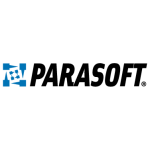What is most valuable?
Using the agile method, each iteration is scheduled to last 1-2 weeks and development would take up most of that. The testers didn't have enough time to properly test the application. With Service Virtualization, we virtualized the services and we brought quality into the agile iteration “extreme left”, and we started early testing.
That's how we got enough time to test the product. Service Virtualization helped us by using marks and stops. We are easily integrating with other applications and we are performing integration testing seamlessly. Before implementing Service Virtualization, services were not always available because of infrastructure issues or iteration time schedules. Service Virtualization removed all these problems that we were facing in the industry and allowed us to quickly do our job.
How has it helped my organization?
We not only use Service Virtualization for web services, we also use it to virtualize services that we used to pay for. It can be used in the enterprise bus to integrate external applications. In the QA domain, you need to pay a lot to use their services. Service Virtualization can save you this money.
For example, I have previous experience with the financial and insurance industries. In the financial sector, we integrate with third-party credit agencies to check credit scores. You still need to pay for these services even when you are only testing your application. If you virtualize that functionality, you don't need to talk to them, and you don't need to be dependent on their system availability.
What needs improvement?
We still have mainframe systems and while CA provides instructions on how to integrate Linux-based applications, they don’t provide integration steps for mainframe.
We would like to see improvements in mobile integration. Integration is partial, but we would like to have full-fledged functionality. Android mobile solutions are out there, so you can download an app and have full-fledged mobile coverage. You can set the model and Android operating system. But we can’t integrate these with development testing. If we get that feature, we don't need to look at other products like HPE Mobile Center, or something else. Having mobile would be good for us.
We are also looking for more knowledge to share with our developers, and others, on how to use Selenium scripts within CA Service Virtualization. The process is pretty simple. You build everything in Selenium, convert the script to JSON, and dump it to Service Virtualization; alternatively, copy the script and put it in CA Service Virtualization steps. But these guidelines are not clear enough. Clarifying this process would definitely be a benefit for CA.
What do I think about the stability of the solution?
Service Virtualization is pretty stable.
What do I think about the scalability of the solution?
We are in the financial industry and process a large number of transactions. Every second, we process around 78,000 transactions; every second counts. Sometimes, especially when the servers are down, our message queues will accumulate hundreds of thousands of messages. When the issue is resolved and the gates are open, all those messages will flood the system. We tested all these things with CA Performance Testing. In real time, we cannot test using Service Virtualization, but we built all the messages, and the message queues, and we tested by opening the gates. We found that scalability is also pretty good.
How are customer service and technical support?
Calling technical support works out good. But the website search function could be improved a lot. Their knowledge management system is not up to the mark. The search functionality really needs to be improved. CA has to really spend some time looking into that. Depending on the search, the content can be very limited. I would like to see examples and links to the documentation. The current search function is not detailed enough.
Which solution did I use previously and why did I switch?
I'm a systems architect. I had a lot of experience with the development infrastructure architecture. I see that there are problems in all production areas. I always do research on the latest and greatest products. CA is one of the companies I've been following for almost 15 years. I discovered Service Virtualization when I learned that CA acquired ITKO.
How was the initial setup?
I was involved in the initial setup at a different client. It was pretty straightforward, I never faced any issues, and in fact I purchased myself a license from CA, spending a lot of money on this. I was a good investment for me. I'm very passionate about technology. I have bought a lot of software, but it is worthwhile spending money on this.
Which other solutions did I evaluate?
We also use HPE for testing right now, particularly Mobile Center. Not every product will address 100% of the issues.
However, CA Service Virtualization is totally number one in the market, no one comes close to this. HPE introduced a product recently, but they're nowhere close. They need to spend a lot of time on that product.
What other advice do I have?
Definitely look at the capabilities of your application initially. Everything depends on that. I can say that Service Virtualization really helps you to reduce time spent testing, and improves the quality in the agile process. If you are not using this, I advise you just have a look. Definitely you'll like it, and you'll implement it.
Disclosure: My company does not have a business relationship with this vendor other than being a customer.







